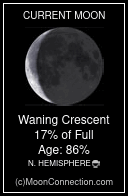Shadbush Tree (Amelanchier): A Hardy North American Native with Beautiful Flowers and Edible Berries
The shadbush tree, which is scientifically named Amelanchier, grows naturally across many parts of North America and as native to the Eastern USA. It belongs to the rose family, which also includes apples, crabapples, and quince. The tree is a familiar sight in neighborhoods, gardens, and wild areas alike because of its attractive appearance and ease of growth.Appearance and Growth
Shadbush trees grow quickly and can reach heights of 15 to 30 feet over a few years. They develop a rounded crown with spreading branches, giving them a pleasing shape in landscapes. The leaves are oval with finely toothed edges, starting dark green in spring and turning bright orange or yellow in fall. In early spring, before the leaves show, the tree blooms with clusters of delicate white flowers, usually with five petals. These flowers add early-season interest and attract pollinators.Growing Conditions and Care
The tree prefers well-drained, moist soils but adapts to a range of soil types, including sandy or clay soils. It thrives in full sun, which encourages better fruit production, but can tolerate partial shade, albeit with reduced berry yield. Shadbush is hardy and generally resistant to pests and diseases, though occasionally it may face common issues like rust or leaf spot. Shelter from harsh winds supports healthier, straighter growth. An important feature is that shadbush can self-pollinate, so planting a single tree will commonly result in fruit production.
Fruit and Wildlife
Following the spring flowers, the tree produces small oval berries that mature from green to reddish-purple and finally a deep dark purple or black in summer. These berries are edible and popular for eating fresh, making jams, jellies, pies, and other treats. Aside from being tasty, the berries provide good nutritional value, including vitamins A and C and antioxidants. The fruit is also a favorite food source for birds such as waxwings, bluebirds, finches, wrens, goldfinches, and chickadees, which help spread the seeds. Bees and butterflies are attracted to the spring flowers for nectar. While deer may occasionally browse the plant, the shadbush is generally somewhat resistant to deer browsing.
Considerations for Pets
Though the berries are safe and healthy for humans and birds, they can be toxic to common household pets like dogs and cats. Pet owners should be mindful if they have shadbush trees growing in areas where their pets play or roam freely.
Landscape and Community Value
Shadbush trees add seasonal beauty with their spring blossoms, summer fruits, and autumn leaf colors. Their ability to attract and support wildlife makes them a favorite for gardeners interested in native plants and ecological gardening. Many people enjoy sharing stories, gardening tips, and birdwatching experiences related to their shadbush trees through local gardening clubs, online forums, and social media communities. This shared interest helps cultivate a sense of connection and appreciation for the tree’s role in both natural and urban settings.
Learn More about edible plants of North America
More Information/Sources:
- https://extension.psu.edu/serviceberry-in-the-garden-and-in-the-kitchen/
- https://en.wikipedia.org/wiki/Amelanchier
- https://plants.usda.gov/DocumentLibrary/plantguide/pdf/pg_amca4.pdf
- https://hort.extension.wisc.edu/articles/serviceberry-amelanchier-spp/
- https://princetonnj.gov/1391/April-2023---Serviceberry
- https://www.chesapeakebay.net/discover/field-guide/entry/shadbush
- https://plants.ces.ncsu.edu/plants/amelanchier/
- https://en.wikipedia.org/wiki/Amelanchier_canadensis
- https://www.changehampton.org/native-plants/coastal-shadbush/
- https://extension.umd.edu/resource/serviceberry-early-flowering-maryland-native-tree
- https://www.missouribotanicalgarden.org/PlantFinder/PlantFinderDetails.aspx?kempercode=j2


